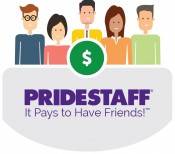When your employees show up for work each day, the last thing they want to worry about is their own personal safety. Bad things happen, and as a business leader, it’s your job to prepare for the unthinkable so you can minimize injuries and keep your employees safe. If your employees feel unsafe, they might stop coming to work altogether, you’ll experience high employee turnover, and you’ll struggle to attract qualified employees.
Here’s How You Can Keep Your Employees Safe at Work
Be Realistic
First of all, understand that as grim as these situations are, they can actually happen in your workplace. Someone, either a complete stranger or someone you know, could get into your building. When you acknowledge that it can happen, you can prepare. If you don’t, any potential situation could end in tragedy.
Be More Alert
Encourage your employees to pay closer attention to unusual or suspicious people and ask questions of people they’re not sure about. Teach them to be polite but assertive. The sooner you understand you’re in danger, the sooner you can act to save yourself and your coworkers — every second counts. When someone reports something, take it seriously.
Consult an Expert
There are many experts out there, usually former military or law enforcement officials, who now train people in schools and offices and other public places on how to protect themselves and respond in case of an emergency. They can help you find something that works for your building. It might involve extra locks on doors, security cameras, an alarm system, or even bulletproof glass.
Make a Plan
Every workplace should have some sort of emergency plan, whether it’s an accident, a violent incident, or a natural disaster. Write one up for your team and include in your employee handbook or somewhere else in your policies and procedures. Since it will likely include a lockdown or evacuation, everyone should know about it and know what to do in case something happens.
Rehearse Your Plan
Every three to six months, you should carve out some time to practice your plan. Make sure people know what to do and where to go in the case of each type of emergency. Whom do you notify? How do you alert others?
Identify the Leaders
Find people on your team who are willing to take on additional responsibilities in the case of an emergency. They’ll be in charge of coordinating everyone’s efforts and communicating information to the right people. You might consider providing a basic self-defense or emergency response course to your employees.
For more tips on how to prepare your workplace for an emergency and keep your employees safe at work, contact Pridestaff Thousand Oaks today.



